SMS vs MMS text messages: definition & differences
Learn the differences between SMS and MMS texts along with ways to combine them for the best marketing and messaging.

Learn the differences between SMS and MMS texts along with ways to combine them for the best marketing and messaging.

What’s the difference between SMS and MMS text messages and why does it matter? What even are those types of messages?
These are questions we hear every day from business owners starting out their text marketing strategy. The good news is, both SMS and MMS are easily accessible text marketing tools.
We’ll walk you through the differences between SMS and MMS text messages along with instructions for using both to send audio, video, GIFs, and more.
SMS, which stands for Short Message Service, is a fancy term for text messages under 160 characters. If you want to get technical, it’s a special communications protocol created to send and receive text messages over cellular networks.
The first text message was sent via the SMS protocol way back in 1992. It is the most widespread and frequently used texting technology.
MMS stands for Multimedia Messaging Service, and it’s a type of texting that involves media (like videos, images, GIFs, and audio) and up to 1,600 characters.
MMS is an extension of the core SMS protocol, and it was developed to enable the transmission of multimedia content via text message.
TL;DR: SMS comes with a 160-character limit, while MMS allows for 1,600 characters as well as media such as pictures, videos, or audio.
The main difference between SMS and MMS messages is the type of content you can send. With SMS, you can only use plain text under 160 characters. (With extended SMS, you can send up to 306 characters.)
MMS allows you to send images, videos, audio, GIFs, PDFs, and text up to 1,600 characters. However, because of the increased character length, MMS messages typically cost more to send.
You’ll run into these two terms most often in the phrases “SMS marketing” and “MMS marketing.”
Let’s get into some more specifics about both.
Almost all devices support both SMS and MMS, so you usually don’t need to stick to one over the other. Realistically, a good text marketing strategy should include a combination of the two for variety.
As you can see here, SMS and MMS text messages can look quite different, meaning you can match the message type to the text you’re sending.

The biggest differences between SMS and MMS messages go beyond the visual elements and MMS’ ability to include media.
SMS messages are best for quick text-based alerts or notices, while MMS messages are perfect for highlighting products, sales, or anything that needs a visual element.
The table below highlights some of the practical differences between MMS and SMS messages to help you pick the best option for each scenario.
| SMS | MMS | |
| Stands for | Short Messaging Service | Multimedia Messaging Service |
| Images | Appear as links | Appear directly in message |
| Maximum length | 160 characters | 1,600 characters |
| Price | 1 credit | 3 credits |
You can group the main differences between SMS and MMS into three areas:
Where SMS marketing only allows for up to 160 characters per text, MMS marketing allows for an unlimited number of characters per text, technically speaking.
Practically speaking, wireless carriers tend to limit the length of MMS messages, but the result is still roomier than SMS.
At SimpleTexting, for example, you get up to 1,600 characters per MMS message.
MMS also gives you the ability to embed rich media like images, audio files, baby elephant GIFs, and short video clips.
With SMS, you can only include links to your media — you can’t add it directly to the text itself.
MMS messages cost a bit more than SMS messages because they involve transmitting more data.
The difference in cost varies from provider to provider. With SimpleTexting’s text messaging platform, MMS costs 3 credits per message. SMS, on the other hand, costs 1 credit per message.
The nice thing is that you can mix and match your MMS and SMS messages to suit your messaging strategy.
For example, if you buy a 1,000-credit plan, you can send 400 SMS messages and 200 MMS messages. (400 + [200*3] = 400 + 600 = 1,000.)
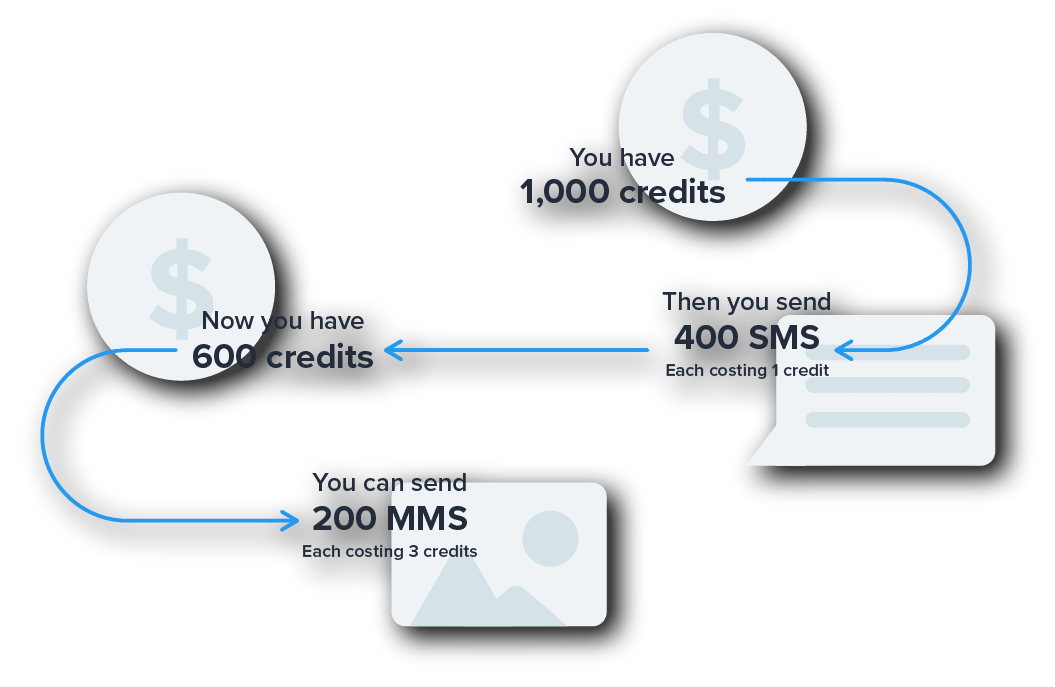
In case you’re wondering, “Why should I pay more for MMS?”, the answer is simple: MMS campaigns have a 20% higher opt-in rate than SMS campaigns. MMS messages are also 8x more likely to be shared on social media.
Don’t take our word for it, though. Check out these SimpleTexting customers who got amazing results using MMS.
We recommend choosing SMS for messages where “short and sweet” makes the most sense. SMS is perfect for communicating important details, from order confirmations to time-sensitive alerts.
SMS messages are also great for campaigns where you’re bringing contacts in using a keyword.
A keyword is simply a short word or phrase that contacts can text to your number to agree to receive texts from you. If you’re expecting a lot of new contacts, using SMS for your confirmation message can help keep your costs low.
Here’s an example:
SMS messages also work well for transactional texts like:
Finally, many of our awesome customers also use SMS for marketing and promotions, generating new sales, and improving engagement with coupons and other offers.
Most promotional text messages benefit from photos, GIFs, or videos.
The reason is simple: Those who use visual communication to get their message across to an audience are more successful than those who rely on words alone.
We ran an A/B test with a SimpleTexting customer to prove the concept, and the test found that the MMS message in the test received a 52% higher click-through rate (CTR) than the SMS message.
Consider sending MMS when you want to:

Texting out your contact card with your welcome message encourages your subscribers to save your contact info right off the bat so they recognize and trust your texts going forward.
First thing, you’ll need to create and download a virtual business card (you can design a free one in Canva).
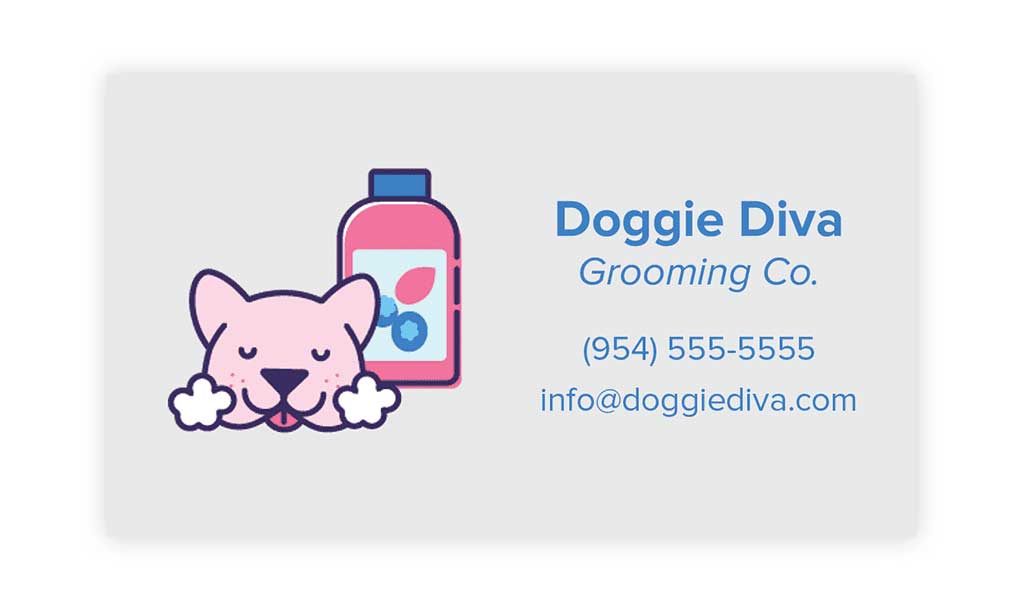
Once you’ve created your card, you’ll attach it to a message. People do this most often with a keyword.
Keywords are words or phrases that new contacts can text to your number to sign up for your texts. A dog grooming business might use the keyword “GROOMER.”
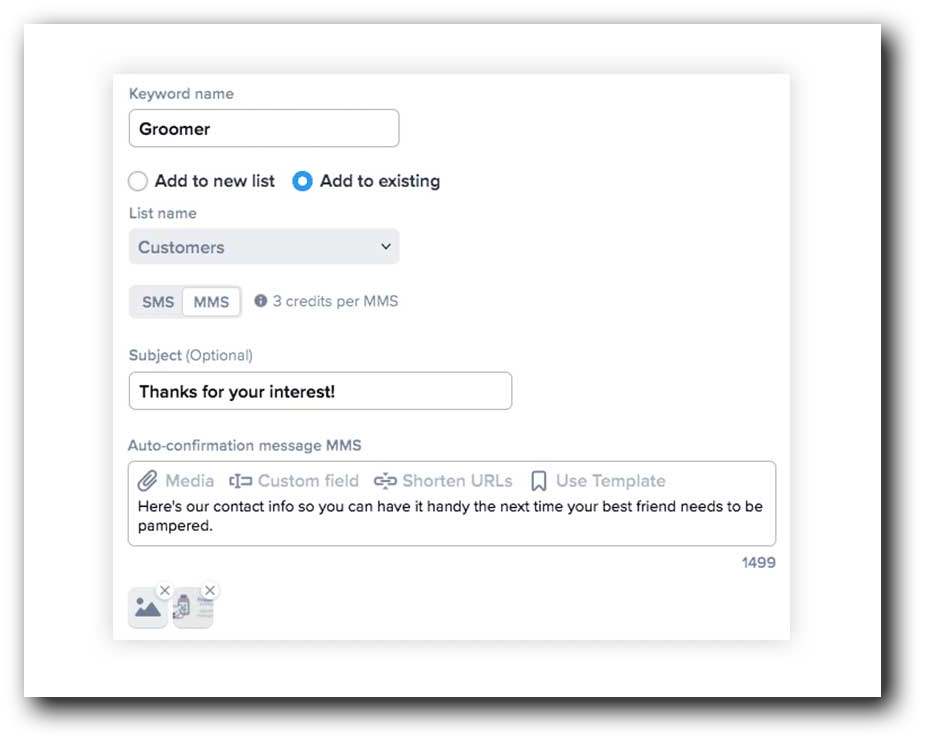
Your keyword setup will require an auto-confirmation message that automatically replies to new subscribers. You’ll use this message to send your business card.
Images and GIFs help communicate your message more effectively and add an engaging visual component.
If you’re sending a GIF from your phone’s messaging app, you’ll only need to follow a few steps.
The process is just as easy within your SimpleTexting account.
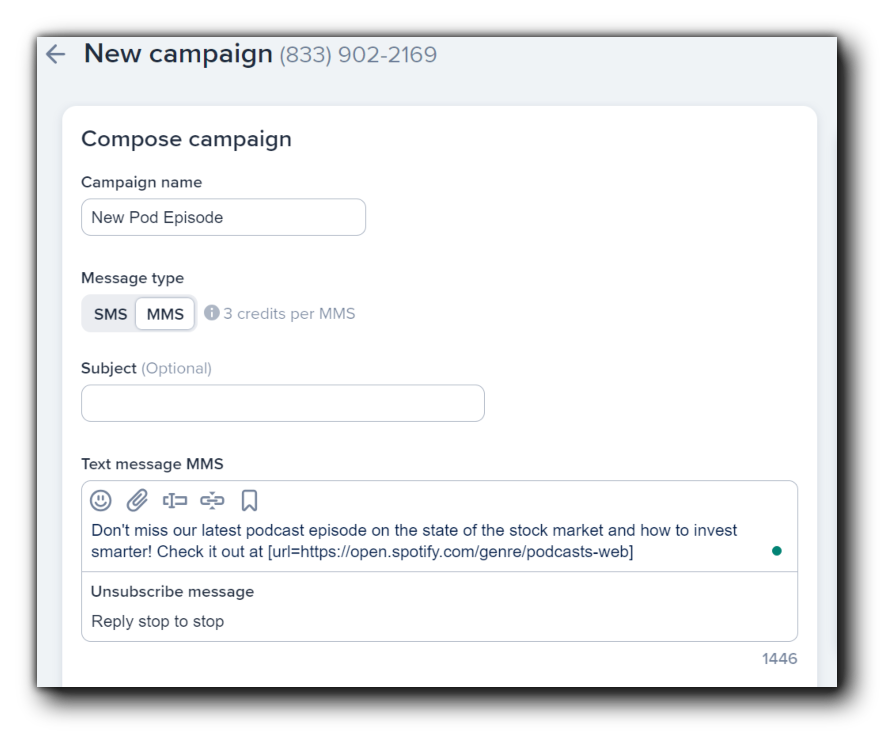
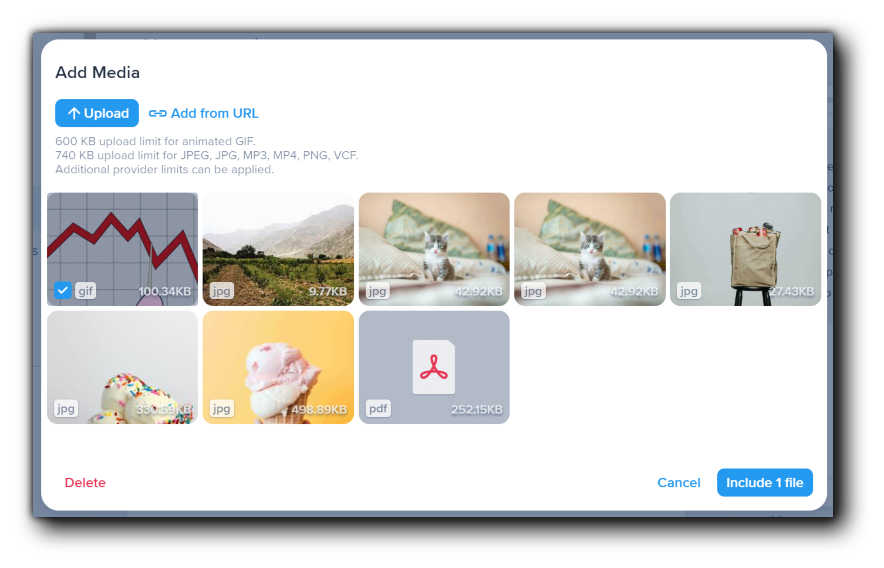
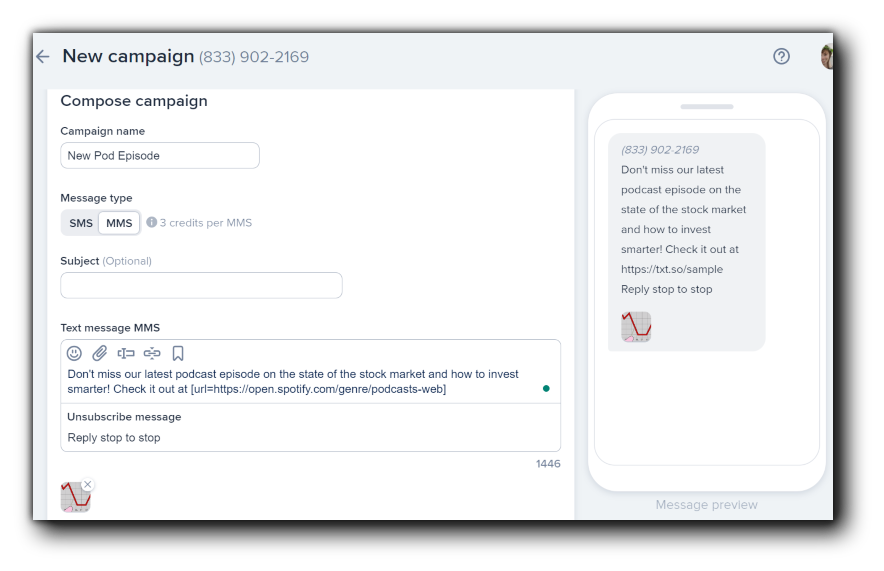
Sending an image in your text takes a few more steps.
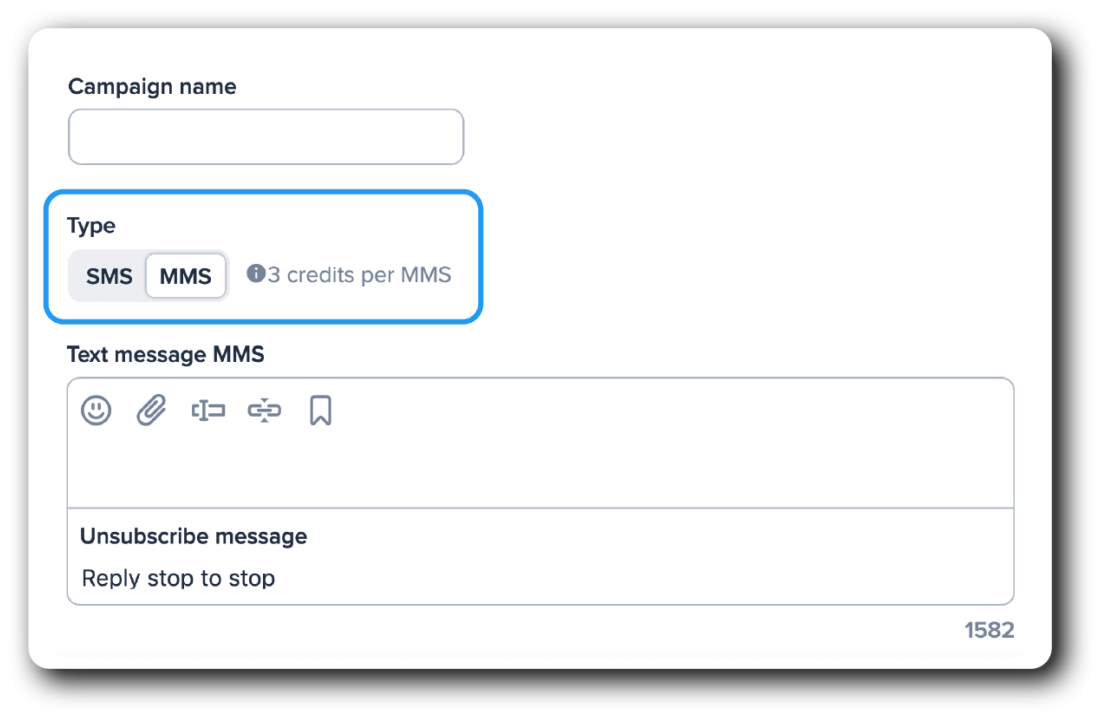
3. Click the paperclip button.
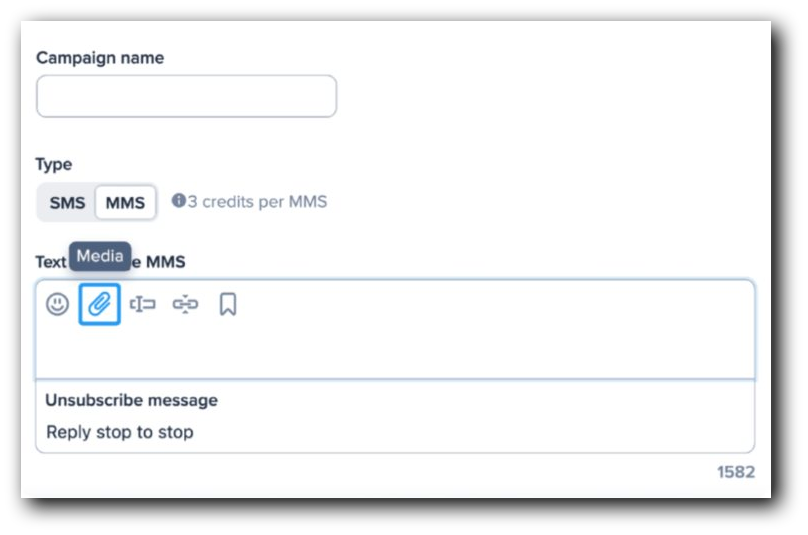
4. Upload the desired image or paste in the URL where it’s located.

5. Click the image once it’s uploaded and hit the blue “include” button.
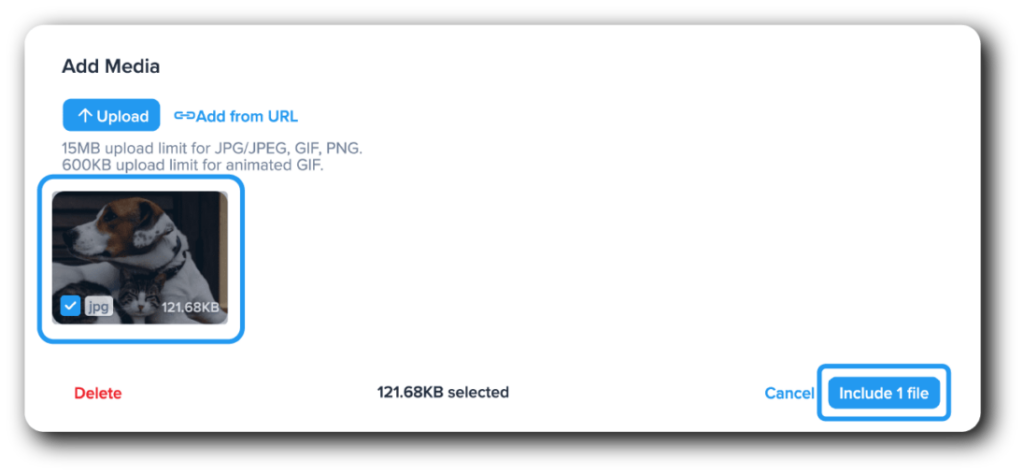
6. Send your campaign as usual.
It’s still possible to send photos without using MMS, but your image won’t appear in the text message itself.
With SMS, you can instead include links that, when clicked, send recipients to the photo online.
Here are six steps to attach an image to an SMS message as a link:
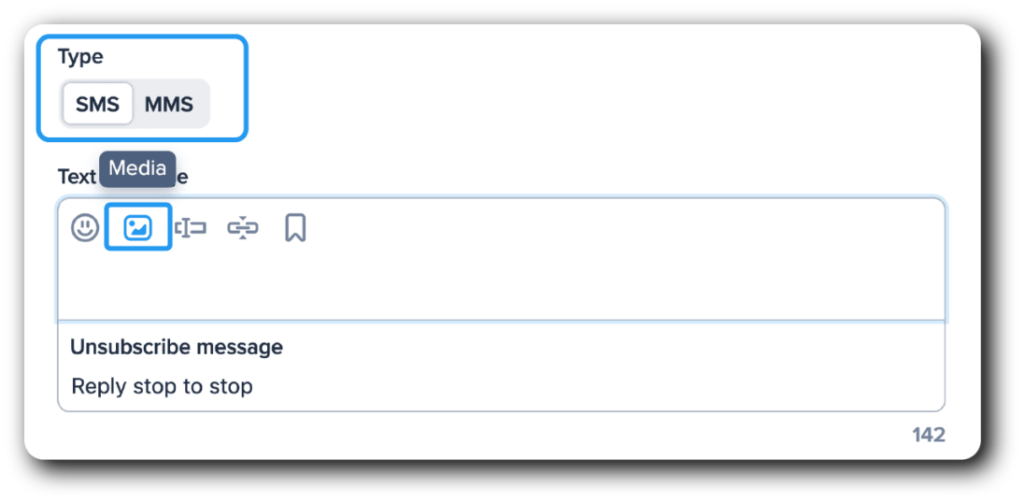
4. Paste the image’s URL or upload a file from your computer. Any JPG, PNG, or GIF file up to 10MB will work.
5. Hit the “insert” button.
6. Send your campaign.
Texts (even MMS messages) are a super concise way to communicate, and what you have to say might not always fit within 1600 or 160 characters.
In those cases, you can text a PDF that includes the information you couldn’t include in the body of your message.
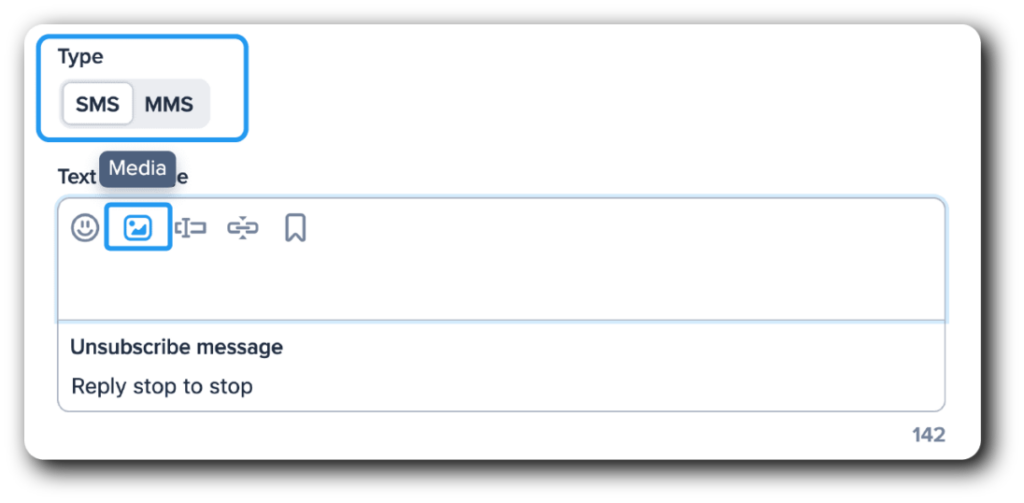
3. Upload your PDF as a URL or a file, then press the blue Include button.
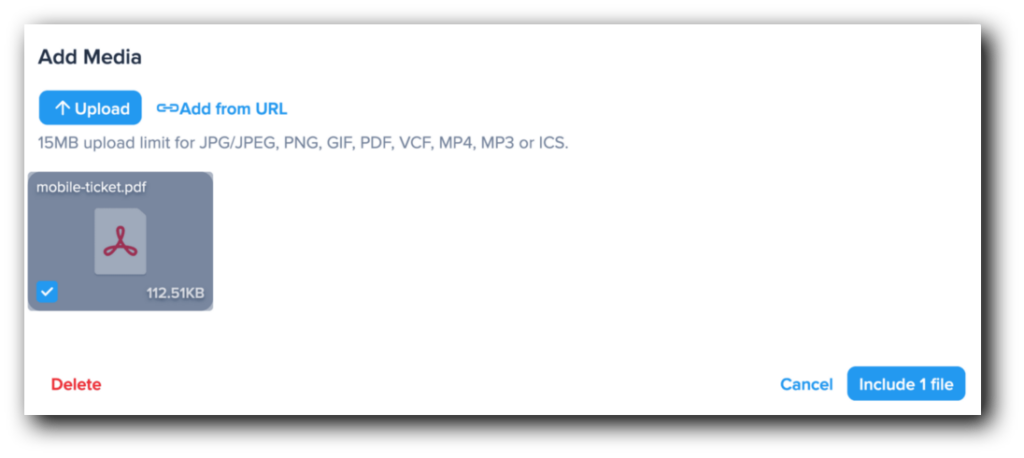
4. Your PDF will appear in your message as a link that will send recipients to the document online.
That’s the campaign PDF setup, but you also have the option of sending PDF files through your two-way messaging Inbox.
Simply open the conversation where you want to send the file and click the paperclip icon below the message box.

Click Upload and add your desired PDF with the blue Include button.
Your PDF will show up in your message as a link just like in a campaign.
While the steps here are the same, PDFs sent with an MMS message will show directly in the message body instead of as a link.
When a subscriber clicks on the PDF, it opens within the text message, where the recipient can save the PDF like a photo.
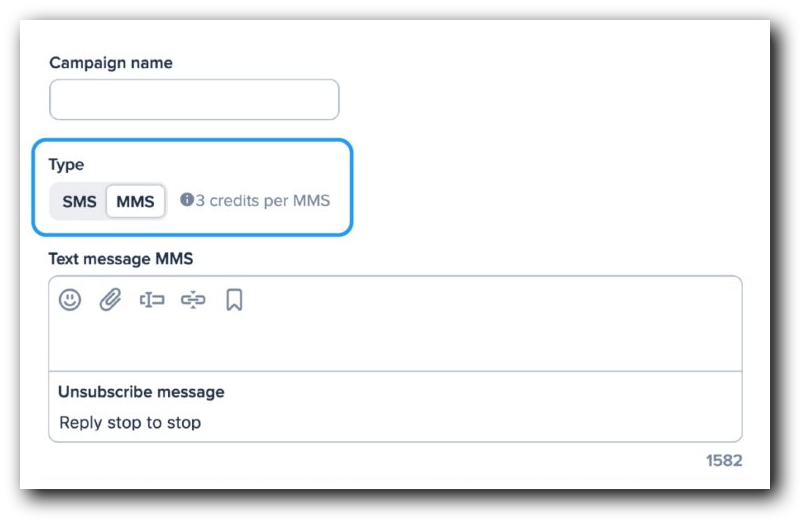
2. Choose the paperclip icon.
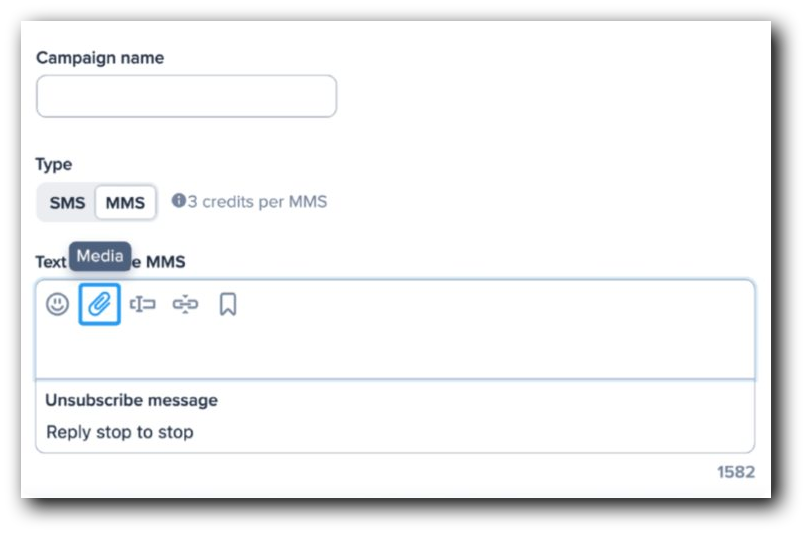
3. Follow the steps to upload your PDF as a file or from a URL.
4. Your PDF will show up directly in your message and can open without the need for an internet connection.
Maybe you’re sending out some content meant for the audio learners on your subscriber lists, like a podcast or a voice memo announcement. Piece of cake.
If you want to send an audio file bigger than 1 MB, you’ll do so via a link in an SMS message.
The resulting message will look like this to recipients. When they click the link, they will be redirected to listen to your audio.
To use this method, your file must be 1 MB or less.
If your file is bigger than that, you can try to compress it. There are a few different ways to do so.
The easiest way is by using Adobe Premiere or Audition. You can set your compression to a significant amount (aka 1 MB). There are other free tools out there with a few extra steps, like HandBrake.
Once you’re ready to text your audio file, follow these steps.
Sending a video text message is one of our top tips for standing out in subscribers’ inboxes and showing off your brand’s voice.
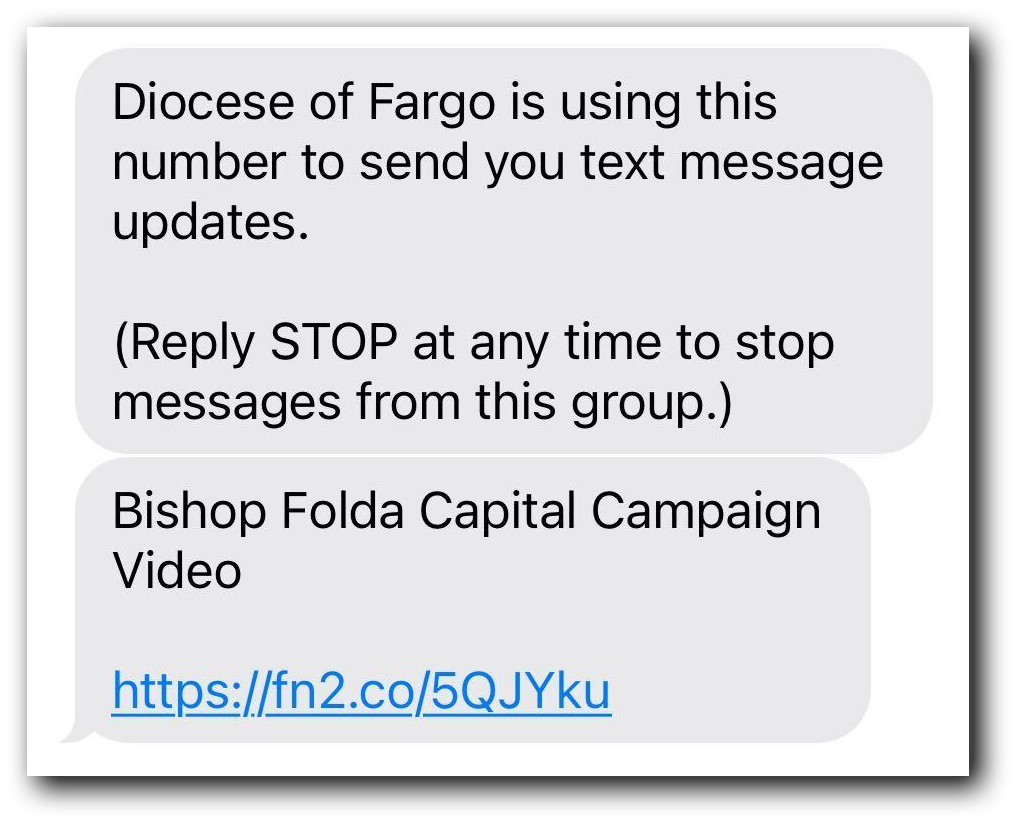
And you don’t have to take our word for it. Let me show you how one of our customers does this.
Our customer Casey regularly sends texts with a video and a discount on monthly services to customers who book a single cleaning with his company.
Here’s how to replicate the process using SimpleTexting.

Still have questions? We don’t blame you. Check out these FAQs from business owners like you.
We all love exciting visuals, so it’s not surprising that text messages with pictures typically drive more engagement. However, with conversion rates from SMS campaigns as high as 45%, your text marketing strategy should include a mixture of both.
If you’re interested in SMS or MMS marketing, here are some helpful links to get you started:
If you’d prefer to chat with someone, our team of SMS marketing experts would love to help. We’re available 7 days a week. Text or call us at (866) 450-4185 or use the chat icon at the bottom of your screen.
Drew Wilkinson is the Head of Marketing at SimpleTexting. Drew has more than a decade of experience managing successful integrated marketing programs to build brands, raise awareness, and generate demand.
More Posts from Drew WilkinsonWhether you need to send promos or connect with leads, commercial text messaging lets you get in front of your audience. Find out how to get started.
ReadWith Zipwhip’s SMS service ended on December 1st, 2022, find out how to smoothly transition over to SimpleTexting without losing your contacts or important texting features.
ReadStart a text marketing campaign or have a 1-on-1 conversation today. It's risk free. Sign up for a free 14-day trial today to see SimpleTexting in action.
No credit card required